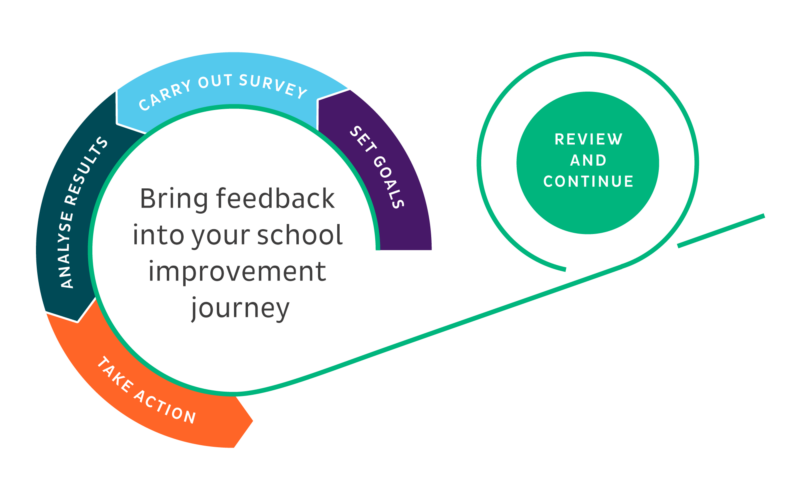18 January, 2025
Stakeholder feedback: top 10 tips for getting it right
Here are our top 10 tips for getting the most out of stakeholder feedback.
Stakeholder Feedback: Top 10 tips for getting it right
In the hustle and bustle of daily learning, gathering stakeholder feedback provides a valuable moment to assess successes in your organization. It also serves as an opportunity to reflect on areas that require improvement. Utilize this feedback loop for a comprehensive understanding of your organizational dynamics.
Stakeholder feedback serves as a catalyst, inspiring action plans for individuals and teams. It also enables ongoing progress monitoring, ensuring continual improvement in the education process.
Here are our top 10 tips for getting the most out of stakeholder feedback:
- Identify the stakeholders: The first step in collecting feedback is to identify the stakeholders. Begin by listing all groups or individuals impacted by the project or process you want to explore further. This step ensures a comprehensive understanding of the stakeholders involved. Remember that different groups will be able to give you information on different things. What do teachers have to say? What can pupils share about their experiences? What about parents and their perspectives?
- Set a goal: Before collecting feedback and determine your objectives. Determine the desired information and formulate the necessary questions for effective data collection. Make sure it aligns with the objectives of your organisation and with the work that you prioritise.
- Choose the right method: There are various methods available for collecting stakeholder feedback, including surveys, focus groups, interviews, and social media. Choose the method that is most appropriate for your stakeholders and taking into account their ability to give you insight into your topic of interest and their availability.
- Ask the right questions: Select questions strategically, ensuring their value to you and enabling respondents to provide meaningful answers. Include some open-ended questions to encourage stakeholders to express their opinions and share their experiences. This can provide valuable insights that you may not have considered.
Keep maximising your stakeholder feedback.
- Keep it short: Keep the feedback collection process short and to the point. Avoid lengthy surveys or meetings that can be time-consuming and may discourage stakeholders from participating.
- Get a good response rate: Try to get as many respondents to give you stakeholder feedback as possible. This will ensure that your results are reliable and reflect the majority of the stakeholders. Use multiple channels to collect feedback. This can include email, social media, or in-person meetings. This will help you reach a wider audience and gather more diverse perspectives.
- Be transparent: Be transparent about the feedback collection process. Communicate with stakeholders about the purpose of the feedback collection, the timeline, and how their feedback will be used.
- Analyse the data: Analyse the data that you have collected. Look for patterns, trends, and common themes. Use this information to identify areas for improvement and to inform decision-making. Additionally, when reviewing results, focus on the positive aspects highlighted by stakeholders. Identify areas of celebration and success for your organisation within their positive responses.
- Take action: Take action based on the feedback you have received. Use the insights that you have gained to make changes or improvements to the project or process. Get stakeholders involved, explaining to them their role and the desired outcomes you are working towards together.
- Follow up: Finally, follow up with stakeholders to let them know how their stakeholder feedback was used. This can encourage continued engagement and build trust with stakeholders. Attain goals through continuous communication, collaboration, and regular check-ins; progress might be gradual but substantial.
Are your decisions working?
To stay informed about the impact of decisions, school leadership must actively monitor their effects on different stakeholder groups. This ensures a comprehensive understanding of the consequences of their choices. Gathering stakeholder feedback on projects aids in supporting future implementations and identifying areas for improvement. It is a way to connect with the people in your organisation and give them a voice.
How Edurio can help for continuous improvement?
At Edurio, we believe in continuous improvement. Our school improvement wheel shows how we support you all the way, from setting goals to tracking progress.
Moreover, over a hundred trusts currently utilise Edurio to gather and seamlessly evaluate feedback from their staff, pupils, and parents.
Edurio streamlines stakeholder surveys and presents results in our visual platform. Additionally, you can easily compare cultural elements and educational quality using validated national benchmarks. This data facilitates targeted support and the identification of good practices.
If you’re interested in some further reading and are a school joining a trust, we recommend, “Deciding to Join a Trust; Guidance for Maintained Schools on Engagement with Stakeholders,” published by The Confederation of School Trusts.
Book a Demo
Data can be a powerful tool for education improvement, but school systems need help to ensure they have access to timely, accurate, and actionable data.
In just 30 minutes, you can find out how our survey platform can help you make data-informed decisions.
Book a demo →
